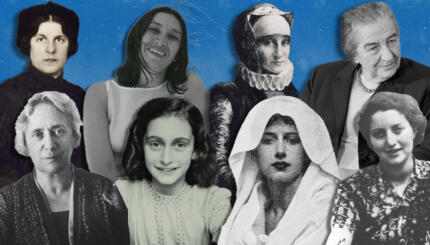Few places in America are more remote than southeastern Kentucky. Back in the early 20th century, a handful of Jewish families settled in the area, though their numbers never became significant since the area was so hard to get to. No rail connection directly linked the region to any of the eastern ports of immigration. If you settled in Harlan, nestled in the Appalachian Mountains, you were willing to live far from the centers of American Jewish life. At the ISJL, we talk a lot about small and isolated Jewish communities. Harlan certainly falls under that category. While Harlan Jews established a congregation, B’nai Sholom, in 1931, the community never had more than 30 or so families, including members from surrounding towns like Pineville, Middlesboro and Evarts.
Press release following the Harlan congregation’s resolution against Hitler’s persecution of Jews, 1933
One might assume that the Jews living in Harlan were cut off from the issues and events that preoccupied Jews living in places like New York. But this would be incorrect. While I was going through the records of the B’nai Sholom at the American Jewish Archives in Cincinnati, I came upon a fascinating discovery. In 1933, the congregation held a Purim event which drew over 100 people. During the program, the congregation adopted a motion “protesting against the Haman-like designs of the German Hitler.” The congregation sent a copy of the resolution to President Franklin Roosevelt and the U.S. Ambassador to Germany. Local Christian ministers also joined the protest statement.
What most struck me about this was the fact that Hitler had only just recently come to power, being appointed chancellor of Germany in January of 1933. Just two months later, Harlan Jews labeled him a “Haman,” and drew parallels between the Purim story and the plight of Jews in Germany.
This incident shows that even though they lived in southeastern Kentucky, Harlan Jews kept up with world events and were deeply concerned about their fellow Jews in other parts of the world. Jews who live in small towns like Harlan get used to hearing the question, “I didn’t know Jews lived in [fill in the blank].” Small-town Jews may rarely cross the minds of Jews who live in larger metropolitan areas, yet these Harlan Jews understood the idea of klal israel, that we are one people.
Purim
Pronounced: PUR-im, the Feast of Lots, Origin: Hebrew, a joyous holiday that recounts the saving of the Jews from a threatened massacre during the Persian period.



